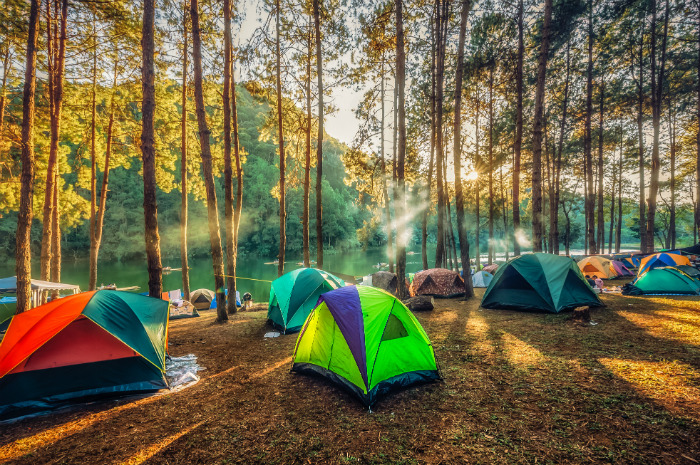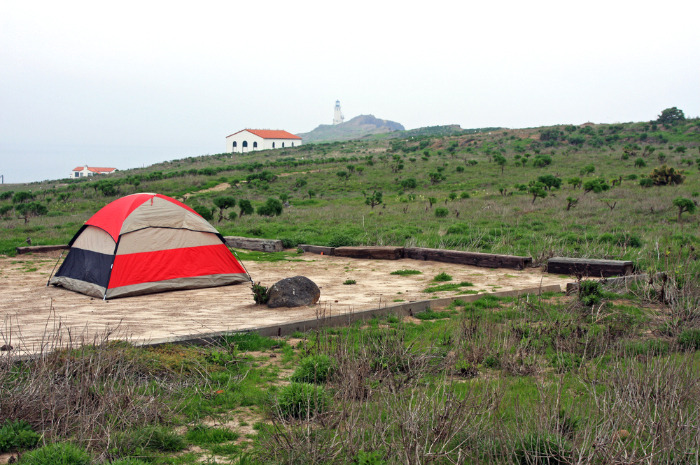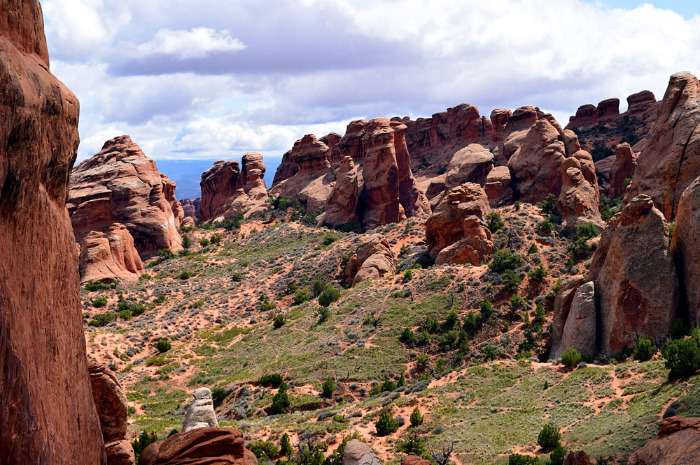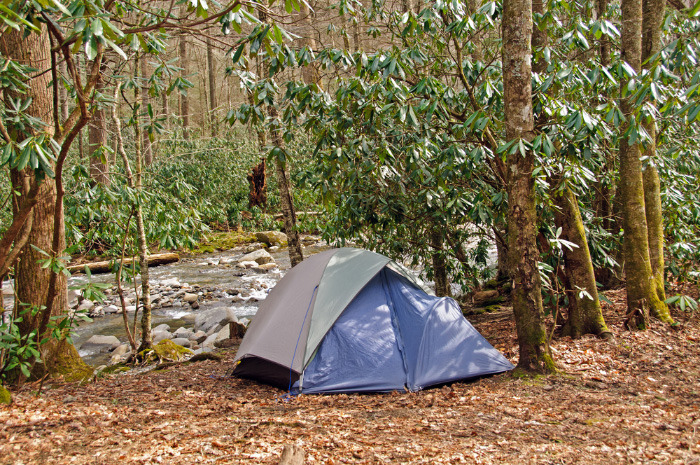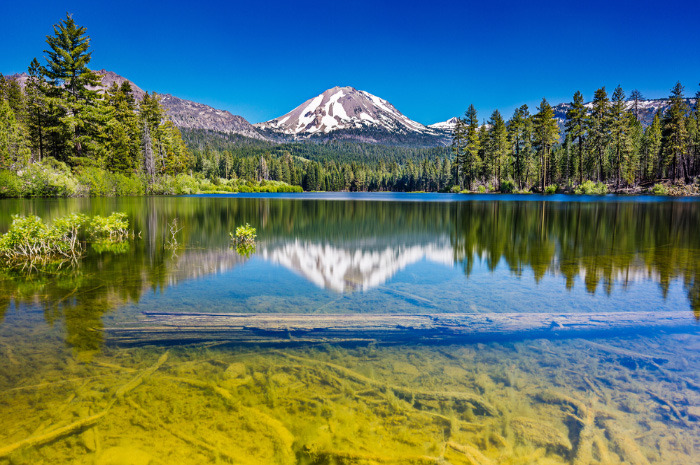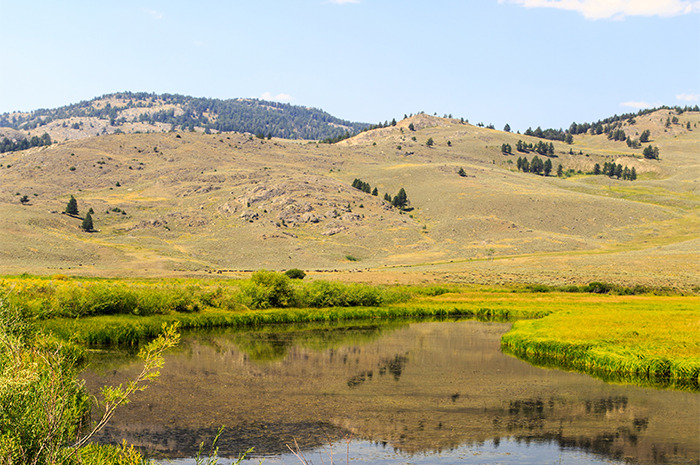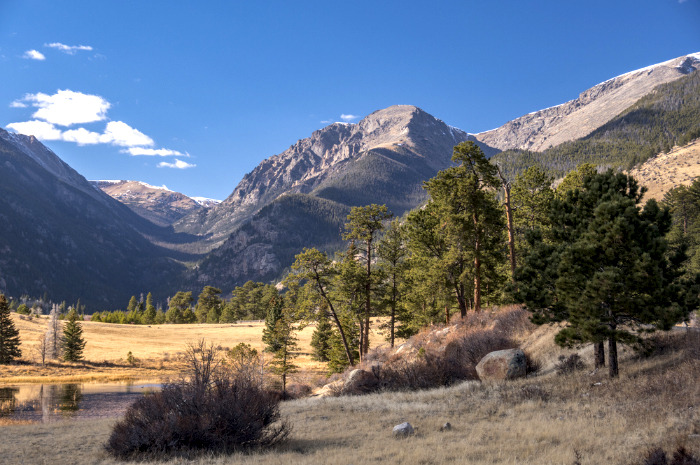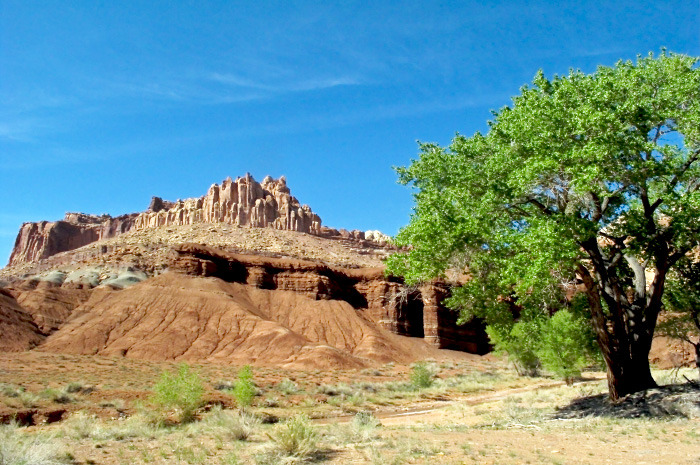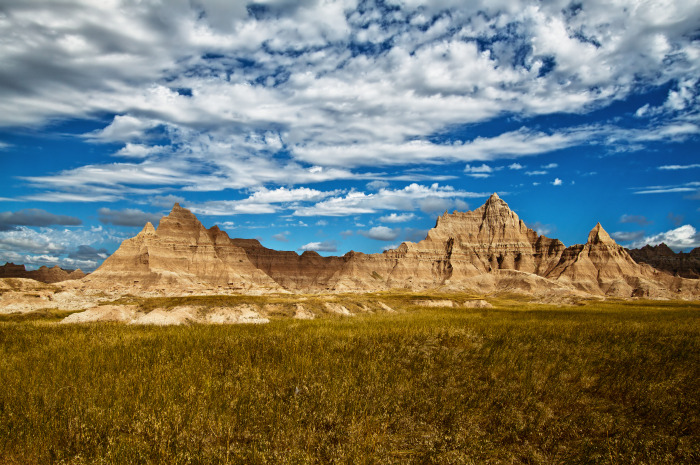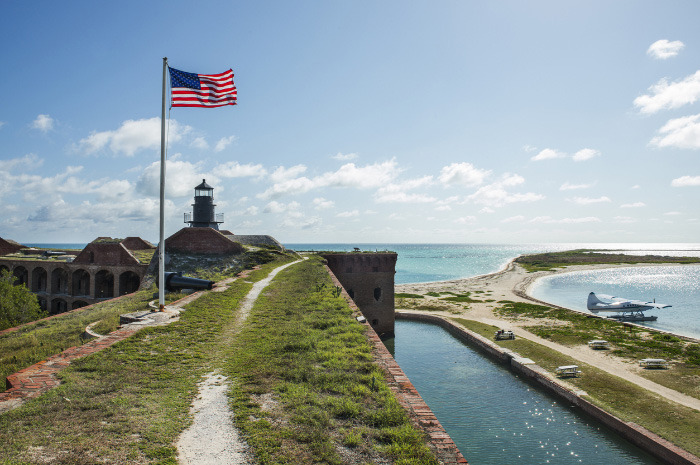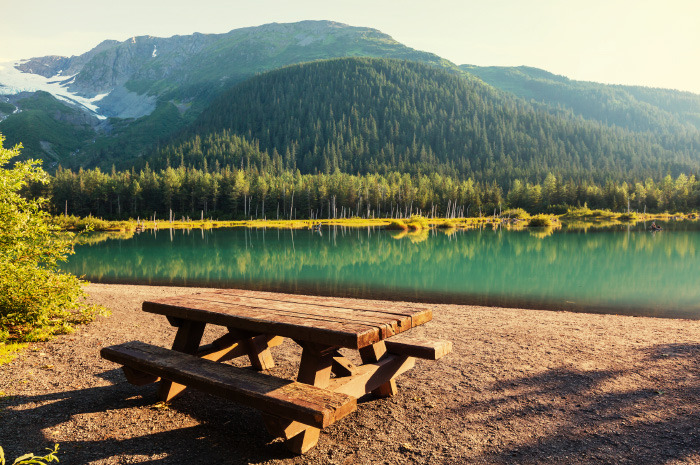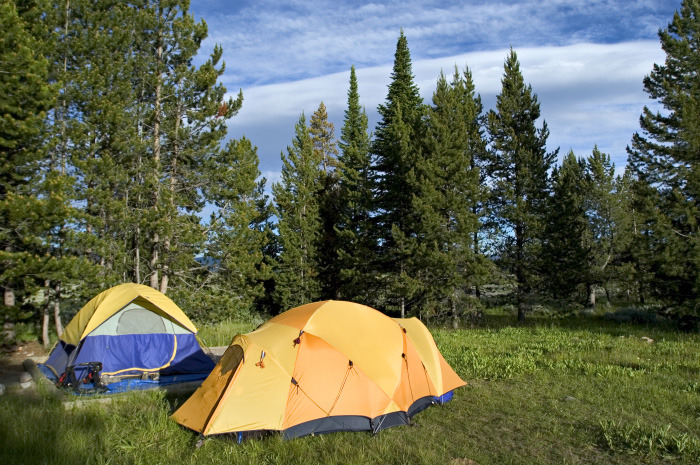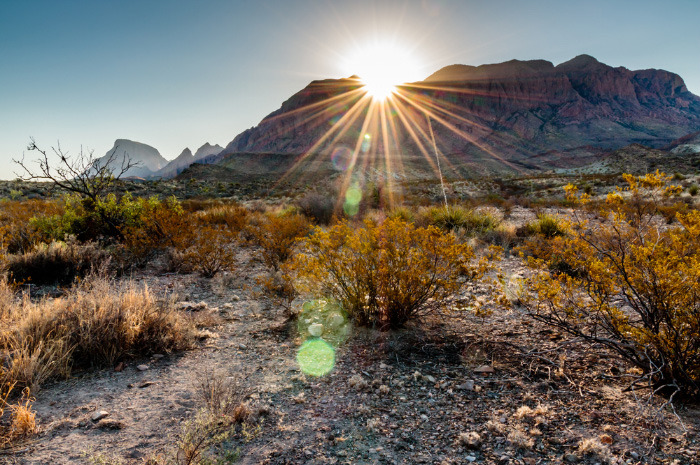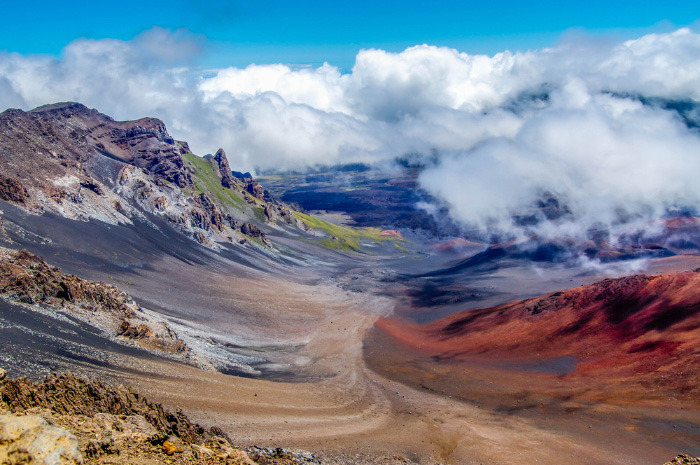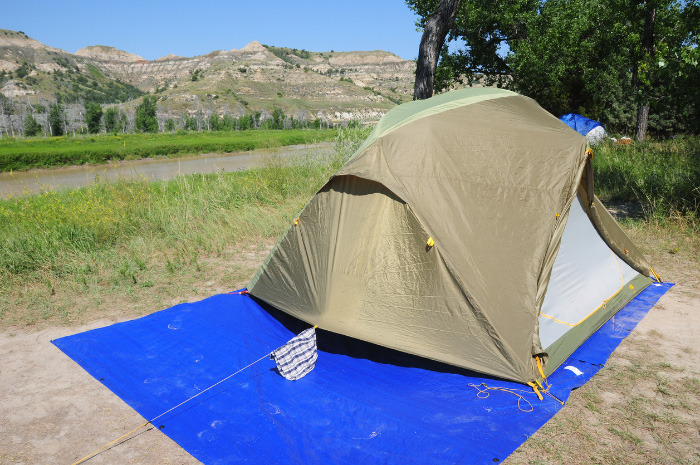Most Amazing Places For Camping In The National Parks
Studies have shown that just a walk in the park can calm the mind while changing the way the brain works to improve mental health. People who spend time in parks cope better with stress, feel happier, and have more self-esteem, according to science. Remember that next time you're trying to decide between a camping adventure and taking the kids to Disneyland. No matter how you prefer to spend your overnight stay in the great outdoors, chances are there's a national park campground that you'll find has everything you're looking for and more.
Anacapa Island, Channel Islands National Park
Only 12 miles from the mainland, Anacapa Island is the most accessible of California's Channel Islands. The chain of three tiny islets is composed of eroded volcanic rock, meaning you'll find steep sea cliffs, natural bridges and sea caves in place of sandy beaches. From the seven campsites on the east islet, you can access a surprisingly diverse landscape across the islands' combined 700 acres.
Devil's Garden Campground, Arches National Park
Located 18 miles from the entrance to Arches National Park, among other scenic surroundings, this campground's landscape is decorated with natural sandstone arches and fins. While the grounds are usually open year-round, they are closed due to a construction project until November 2017. They offer opportunities for some of the best hikes in the country. The desert setting is known for hot summers and chilly winters, so campers are advised to prepare for the seasons accordingly.
Deep Creek Campground, Great Smoky National Park
Deep Creek Campground is all about the water. Located on the southern boundary of Great Smoky Mountains National Park, just north of Bryson City, this 92-site campground is centrally located for all kinds of freshwater activities. From your tent, you're a short hike away from three waterfalls. Campers can also rent inner tubes from just outside the park border to explore the pristine swimming holes and thrilling whitewater creeks.
Manzanita Lake Campground, Lassen Volcanic National Park
As its name conveniently notes, this campground sits next to Manzanita Lake which means campers are presented with plenty of opportunities for swimming, fishing, kayaking, and a host of other water sports. With an elevation of almost 6,000 feet, the grounds are known for featuring cool summertime temperatures. RVs and trailers are welcome here and the National Park Service says this site is particularly ideal for families.
Kalaloch Campground, Olympic National Park
Perched among spruce trees on a bluff overlooking the Pacific coast, the 175-site Kalaloch Campground is the perfect vantage point from which to enjoy the Olympic Peninsula's wildlife-rich southwestern coast. Be sure to follow the trails or stairs that lead 40 feet down to the beach, where you can explore the tide pools brimming with anemones, crabs, starfish, and sea urchins.
Slough Creek Campground, Yellowstone National Park
Yellowstone National Park has never been the kind of place where you could get away from the crowds. But Slough Creek Campground is a different beast. A nearly two-hour drive from Old Faithful and hidden 2.2 miles down an unpaved road, this 23-site campground is the park's smallest, located out in the Lamar Valley near the northeast entrance. Popular with fly-fishermen looking to snag cutthroat trout, the valley also offers some of the best wildlife viewing in the park.
Moraine Park Campground, Rocky Mountain National Park
Set in a ponderosa pine forest abutting a wide-open meadow that fills seasonally with wildflowers, the Moraine Park Campground offers some of the most scenic views in the Rocky Mountains, with high peaks on nearly all sides. This is one of the most popular wildlife-viewing spots in the park; Mule deer and elk are a regular presence, but you may also have the chance to see coyotes, black bears, bighorn sheep, and moose.
Fruita Campground, Capitol Reef National Park
This is a park you didn't know you had to see. Backcountry, group, remote, primitive, or developed camping – all options are available. The developed Fruita Campground often fills daily spring through fall. It is adjacent to the Fremont River and surrounded by historic orchards. The campground has 64 RV/tent sites and seven walk-in tent sites. Each site has a picnic table and firepit, but no individual water, sewage, or electrical hookups. Restrooms feature running water and flush toilets, but no showers.
Cedar Pass Campground, Badlands National Park
This campground is equipped with 96 level campsites, and each offers striking views of the South Dakota badlands. Outdoor lovers will have the chance to soak up everything from stunning sunsets and vibrant plants to rare wildlife encounters and incomparable stargazing opportunities. Summer night sky viewing is offered at the campground's amphitheater. After the evening ranger program, you can stay to enjoy the spectacular night sky. Telescopes are provided. The ranger will point out constellations, stars, and planets.
Garden Key Campground, Dry Tortugas National Park
The desert-island digs on Garden Key are the definition of "primitive." You have to bring everything you'll need during your stay, including your own freshwater. The wild surroundings are reachable only by ferry, seaplane or private boat from Key West, some 70 miles away. Located in the shadow of 19th century Fort Jefferson, the 10 beach campsites offer uninterrupted access to the park's famed coral reefs, with amazing snorkeling opportunities.
Wonder Lake Campground, Denali National Park
Chances are the main attraction bringing you to Denali National Park is its namesake peak: At 20,320 feet, Denali (formerly Mount McKinley) ranks as the highest mountain in North America. For the best views of the snow-capped giant, you'll want to pitch your tent at Wonder Lake Campground, which is the farthest from the park entrance but the closest to what you came for. Though the mountain is still 26 miles away, it remains a stunning presence on the horizon at these 28 campsites.
Signal Mountain Campground, Grand Teton National Park
Single Mountain features what can be described as "small and intimate" sites surrounded by spruce and fir trees. There is a camp store and basic amenities located close by for your convenience. Campers in search of outstanding views will appreciate Single Mountain for its abundance of outstanding highland and lake views. It's open from mid-May to mid-October.
Chisos Basin Campground, Big Bend National Park
Surrounded on all sides by rocky cliffs, the 60-unit Chisos Basin Campground has surprisingly pleasant weather year-round, despite its location in hot, arid Southwest Texas. At 5,400 feet, the basin is at a higher elevation than the park's other campgrounds, meaning temperatures can often be 20 degrees cooler here. The nearby Window Trail leads to a scenic V-shaped canyon. It's a strenuous return trip—uphill the whole time.
Hosmer Grove Campground, Haleakala National Park
Located at the 7,000-foot summit level of Haleakalā National Park, this stunning campsite features a self-guided nature trail, which makes for a beautiful early-morning hike as the area's native birds begin to awaken. Despite its tropical location, the high elevation of the campground makes for chilly nights, so campers are encouraged to pack accordingly.
Juniper Campground, Theodore Roosevelt National Park
This badlands campground might feel secluded at first, but campers here will share the land with a wide range of wildlife including bison, wild horses, buffalo, cotton-tailed rabbits, deer, and longhorn steer. These are just a few of the mammals that call this national park home. The grounds are located along the Little Missouri River and the park's 50 sites are open year-round.
